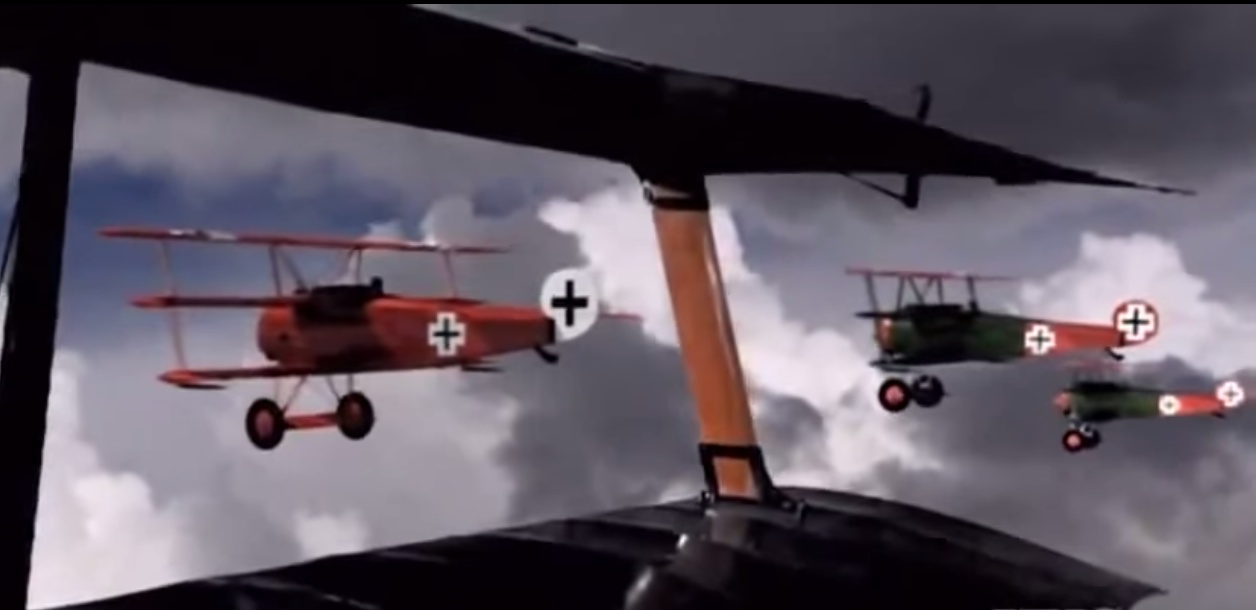The Science of World War I: Airplanes

In the centuries before World War I, wars were waged on land or by navies on the high seas.
But by the time "the war to end all wars" began in 1914, a newfangled flying machine had captured the world's attention. A German immigrant named Gustave Whitehead reportedly flew a heavier-than-air, powered airplane over Fairfield, Connecticut, in 1901, and the Wright Brothers famously took to the air two years later.
As the clouds of war gathered over Europe, airplanes were still crude, unreliable novelties considered useless by some military planners. But others took a longer view: In 1915, British Admiral Jacky Fisher wrote, "The war is going to be won by inventions." History would prove him right. [Photos: The Great War: World War I, 1914-1918]
Duels in the air
Prior to World War I, airplanes and other flying contraptions like dirigibles and hot-air balloons were used primarily for reconnaissance. In 1911, the Italians — at war with Turkey — dropped hand grenades onto enemy troops from a German-built monoplane, marking the first offensive use of an airplane in war.
But few planes were initially available for war in 1914 — France, for example, had a fleet of fewer than 140 airplanes — and those weren't designed for war. Most could fly for only two or three hours, had no weapons installed and were rather slow.
Consider, for example, the B.E.2c, a British biplane with a top speed of about 72 mph (116 km/h). With a 90-horsepower engine — comparable to the outboard motor on a small bass boat — and a flight time of no more than three hours, the B.E.2c probably didn't strike fear into the hearts of German generals.
Get the world’s most fascinating discoveries delivered straight to your inbox.
And without machine guns or other weaponry, early dogfights were little more than airborne duels: Pilots routinely carried pistols and rifles to shoot at enemy pilots. In an encounter over Belgium in 1914, a British airman whose pistol was out of ammunition simply threw the handgun at a German pilot (and missed).
Bombing runs in the first months of World War I were similarly hit-or-miss: A co-pilot (if there was one) would simply drop a small bomb over the side of the plane. Actually hitting a target was more a matter of luck than of skill.
No target was inaccessible
Despite these early limitations, military planners and flying aces saw great potential in their flying machines. Never before had generals considered bombing targets like artillery factories that were hundreds of miles behind enemy lines. Nonmilitary targets — bridges, hospitals, railroad stations, business districts, churches and civilian homes — would also come under fire from above.
This ominous new airborne threat was also appreciated by observers like British historian and science-fiction novelist H.G. Wells, who wrote that England "is no longer, from a military point of view, an inaccessible island."
Rather than continue retrofitting existing aircraft with guns, military planners and engineers took to their drawing boards to invent an entirely different type of aircraft, designed specifically for the rigors of war. Canvas stretched over wood frames soon gave way to sheet-metal construction techniques.
By the war's end, engineers had developed bombers like the Handley-Page O/400, the Royal Air Force's largest bomber, with a wingspan of 100 feet (30 meters). Powered by two 360-horsepower engines, the bomber could fly for 8 hours at a top speed of 97 mph (156 km/h) while carrying one ton of bombs.
Geoffrey de Havilland, a British aviation pioneer (and cousin to famed actresses Olivia de Havilland and Joan Fontaine), designed and built several biplanes that were used as bombers. His 1917 DH.4 airplane, powered by a 250-horsepower Rolls-Royce engine, was one of the war's most reliable bombers.
British fighter planes also earned a fierce reputation with the 1917 introduction of the Sopwith Camel, a technological marvel with twin machine guns mounted directly in front of the cockpit. The guns fired directly into the spinning propeller blades without striking them through the use of an ingenious synchronization gear. [The 10 Most Outrageous Military Experiments]
The German Luftstreitkräfte (the flying wing of the German military) took notice of the Sopwith's air superiority, and responded with the Fokker series of warplanes, notably the Fokker Dr.I, a triplane with superb maneuverability that propelled Manfred von Richthofen — better known as the Red Baron — to fame.
Chivalry in the air
The Red Baron, born into an aristocratic Prussian family, was perhaps the best-known of World War I's so-called "flying aces." He is credited with 80 air combat victories before being shot in the heart during a 1918 dogfight over northern France. He landed his plane safely, but died shortly thereafter.
Other flying aces also achieved considerable renown, including René Fonck of France (75 victories), Billy Bishop of Canada (72 victories), Britain's Edward Mannock (61 victories) and Eddie Rickenbacker of the United States (26 victories).
Indeed, the men who fought brave duels in the air helped to romanticize an otherwise brutal, horrific war that was fought largely in the muddy trenches and blood-soaked battlefields of northern Europe.
Though the popular press made heroes of fighter pilots, who lent an air of excitement and chivalry to "the Great War," the conflict ultimately resulted in the deaths of more than 17 million civilian and military personnel.
The usefulness of airplanes in warfare was never again questioned, and many of the advances made in aircraft design and technology during World War I were used in World War II and subsequent wars.
Follow Marc Lallanilla on Twitter and Google+. Follow us @livescience, Facebook & Google+. Original article on Live Science.



